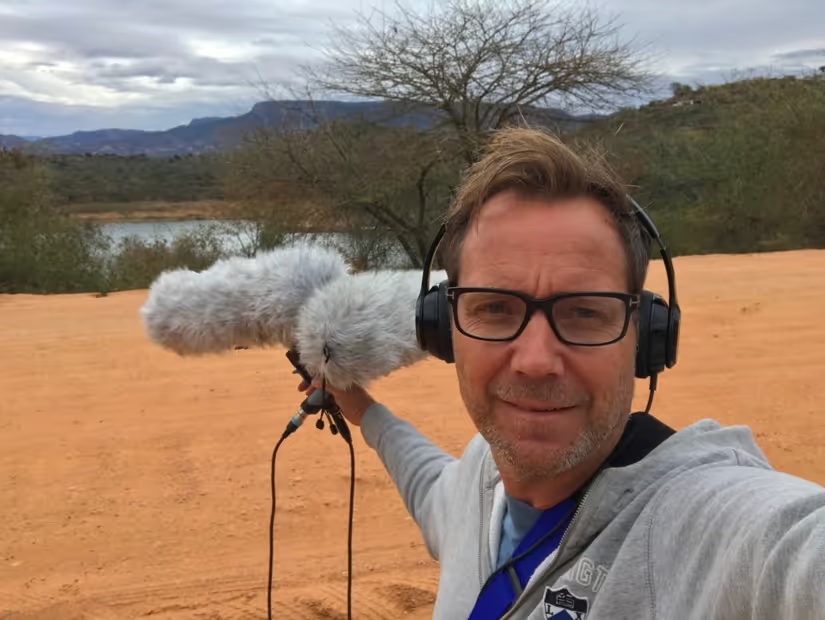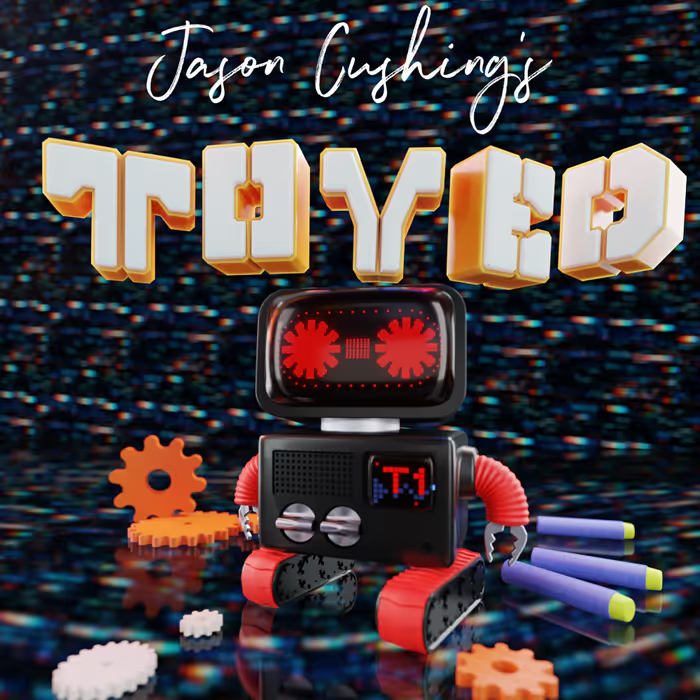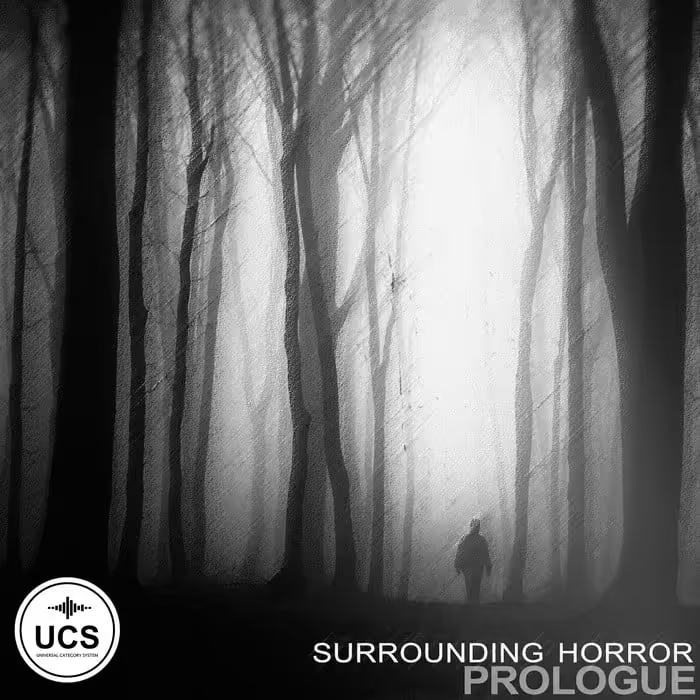In this new interview, he talks about bridging the gap between two different film communities — Norway and Hollywood — using his 4-step sound design approach.
Award-winning sound designer Tormod Ringnes is as active in the world of Norwegian films as he is in Hollywood films, having worked on Hollywood tentpoles like Pirates of the Caribbean: Dead Men Tell No Tales and Maleficent: Mistress of Evil and award-winning Norwegian films like Kon-Tiki and Max Manus: Man of War — all four, of course, directed by long-time collaborator Joachim Rønning.
For those unfamiliar with Norwegian films, it’s worth noting that Kon-Tiki (currently available on Netflix) earned a 2013 Oscar nomination for Best Foreign Language film and Max Manus: Man of War won six 2008 Amanda Awards, including ones for Best Sound Design, Best Film, and Best Cinematography. The Amanda Awards — presented annually at the Norwegian International Film Festival in Haugesund, Norway — are Norway’s highest film awards, like the Academy Awards for Norwegian Films.
Ringnes has also worked on game sound for EA’s Battlefield V, which earned him a 2019 MPSE nomination for Outstanding Achievement in Sound Editing for Computer Cinematic.
Here, Ringnes talks about the differences in film-craft between a big-budget Hollywood film and a Norwegian film — from the director’s approach to the soundtrack to the audience’s expectations — and how he strives to apply his 4-step approach to sound design no matter the size of the production.
Ringnes’ 4-step approach encourages sound designers to get involved during pre-production to talk about the role of sound, to take an active part in production to gather materials needed for post, and it promotes the parallel process of picture editing and sound editing to reduce the occurrence of Avid syndrome/demo love. (It reminds me of a similar approach by award-winning sound designer Wylie Stateman).
Can you tell me about your 4-step process for sound design? How did you develop this approach?
Tormod Ringnes (TR): This 4-step process started in film school where I got to work closely with the director and the production team.
The 4-step process starts before post-production. The first step starts with the script — reading the script and sitting down with the director to talk through particular scenes or concepts. We had a lot of success with that while working on Headhunters (2011) with director Morten Tyldum (who directed The Imitation Game). There were lots of voiceovers in that script and he wanted to try a different approach. So the director, DP, picture editor, and I discussed solutions, including ways to use sound more effectively. That was a creative way to prepare for the film in pre-production and to have the sound in mind as well. So it’s always advisable to read the script, write down ideas, make a sound script, and have a chat with the director and possibly the editor before they start shooting.
It’s always advisable to read the script, write down ideas, make a sound script, and have a chat with the director and possibly the editor before they start shooting.
Step two is to talk with the set designer before the shoot. When you’re not thinking about sound, you might miss putting elements in the picture that would affect the sound. For instance, if a scene takes place during a scary, windy night you should see things moving in the picture. When you start thinking about sound design you can think about what to add into the picture, so that later in the process that sound element doesn’t feel tacked on.
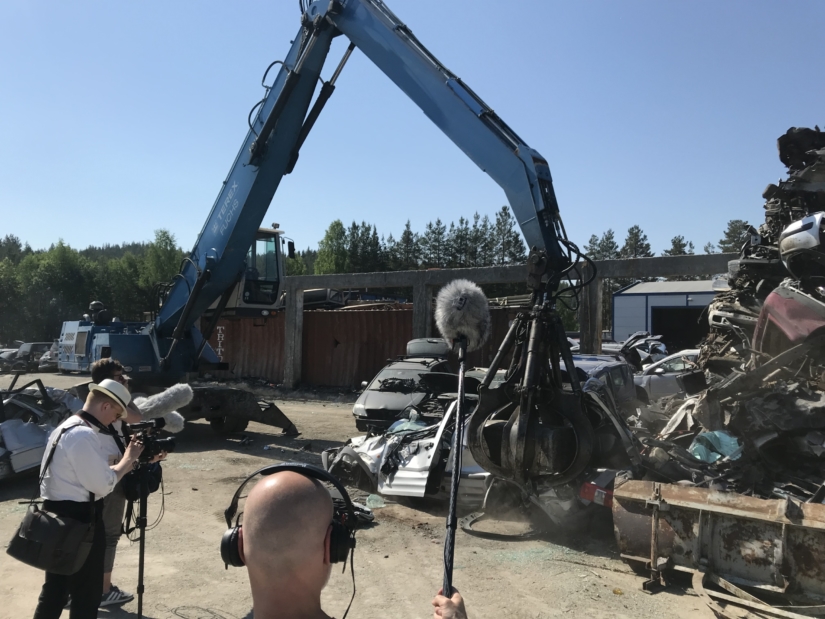
You should also talk with the costume designer. And if possible, you should talk to the actors. When we did The Quake (2018), directed by John Andreas Andersen, we did lots of sound design before the shoot and sent it to them to use on the shoot. There were explosions and debris sounds that the actors could react to. That was helpful for them because there were lots of green screen scenes. Using the sound design during shooting made it more real for the actors. It helped give the actors an idea of what was happening so they could give real reactions.
Using the sound design during shooting made it more real for the actors. It helped give the actors an idea of what was happening so they could give real reactions.
Step three comes during the shoot. The most important thing is to get the best-recorded dialogue possible. But as a sound designer, I know we’ll need ambiences and practical effects. Here in Norway, the sound supervisor is really the head of the sound team and we handle sound supervision and design and the mix. It’s nice to talk to the production sound mixer to get ideas on how a scene will play. We talk about the scenes and the script so that they know what the plan will be for me in post-production. This way we’re on the same page. If there is a special location, they know to capture ambience on-set and around the set. Often, when you’re focused on the picture you can lose the environment beyond the frame. With the environmental recordings of that location, you can make the world feel bigger.
It’s nice to talk to the production sound mixer to get ideas on how a scene will play. We talk about the scenes and the script so that they know what the plan will be for me in post-production. This way we’re on the same page.
It’s always nice to send someone else to record the environments, either an assistant or I’ll go myself. There I can talk to the director about his thoughts for that location (while he’s in the moment) and then try to capture that in my recordings. We did that during filming on The Congo Murders (2018) (which was nominated for a 2019 Amanda Award/Norwegian film award for best sound design). I went down to South Africa and did lots of recording in the jungle and other different environments. It was quite dangerous but rewarding. Our local driver did not want to get out of the car.
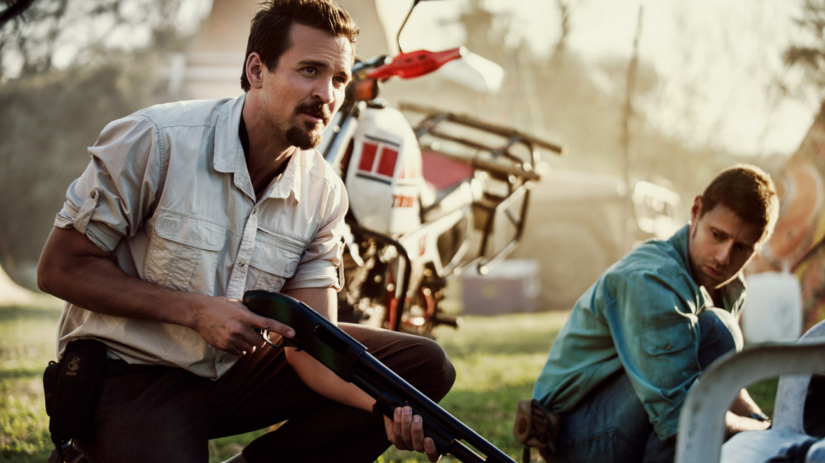
For me, it’s so important to be involved during the picture editing process. That way we can try out scenes with our sounds.
The last step, step four, is to do the sound design work in post. For me, it’s so important to be involved during the picture editing process. That way we can try out scenes with our sounds. Sometimes when you’re not involved during the picture editing, they use temp sounds and music to build out the scene. That can be hard to let go of, especially when the scene is cut to the rhythm of the temp music. In Norway, we call that ‘Avid Syndrome’ (Note: in the US, we call that ‘Demo Love.’). The pace is so important to the cut. So we try to pick out some scenes and do sound design and also work with the composer. They put that in while picture editing and make adjustments to it.
These 4-steps aren’t always what you think of for ‘sound design’ but they’re so important to the sound creation process and give you a good platform to do the final work during sound post with your team.
When working on big films — Hollywood films like Pirates of the Caribbean: Dead Men Tell No Tales — where you’re spending months on the edit, you want to be involved during that time even if what you create doesn’t make it into the final. It’s all about getting the right tone and the right pace. On Kon-Tiki (nominated for a 2013 Oscar award for Best Foreign Film, directed by Joachim Rønning and Espen Sandberg), which was shot in a water tank, they needed the sound to help sell the action in the editing process.
These 4-steps aren’t always what you think of for ‘sound design’ but they’re so important to the sound creation process and give you a good platform to do the final work during sound post with your team. Hopefully, you can then concentrate more on perfecting your design.
Would you recommend other sound designers taking a similar approach?
TR: My approach to sound design is like storytelling. It was fun to be a part of the storytelling when we were working on Maleficent: Mistress of Evil. I always sit down with the director and talk about the film and about sound. I try to get into the characters and create a palette for the soundtrack. Sound for film is really sound and music together. When it works perfectly, it’s amazing. I don’t feel like all big films have that collaboration between the composer and sound designer and director.
Sound for film is really sound and music together. When it works perfectly, it’s amazing.
The 4-step process is easier to execute on Norwegian films because we’re dealing with smaller budgets. But audience expectations are high. When audiences go to see a Norwegian film they compare it to an American blockbuster. Despite the budget, we try to find ways to get the most money on the screen. Early in the process, we think about how we can work together to get the best quality and present the best story.
[tweet_box]Sound Designer Tormod Ringnes’ 4-Step Approach to Great Film Sound[/tweet_box]
On Maleficent: Mistress of Evil, were you able to implement this 4-step process? Did you get involved with the director in pre-production?
TR: Kind of. We got the script and had ideas that we sent to Joachim [Rønning, director]. We all tried to implement this process but, of course, this film was so big that it wasn’t easy. The big difference on this film is that a lot could be done with VFX after the shoot. We had some sound design ideas on some scenes, like the factory of Lickspittle should have some clockworks or mechanical movement, and they put that element in as VFX. It was like doing post set design.
We all tried to implement this process but, of course, this film was so big that it wasn’t easy.
Of course, we had lots of discussions with the editors. We moved to London for the third week of editing. I worked with Baard H. Ingebretsen — an experienced sound designer who has worked on lots of films. We moved to London and set up our design rooms together with the UK team at Soundbytes Studios, but moved later to Soho and put up two design rooms between the director and the editors (Laura Jennings and Craig Wood). So we were close to them.
 Tesla Model X 2015 electric full size crossover SUV sport utility vehicleKrampfstadt Studio65,00 $0,00 $100% OFF
Tesla Model X 2015 electric full size crossover SUV sport utility vehicleKrampfstadt Studio65,00 $0,00 $100% OFF
You work on tent-pole Hollywood blockbusters, like Pirates of the Caribbean: Dead Men Tell No Tales and Maleficent: Mistress of Evil, and on award-winning Norwegian films like The Congo Murders and Kon-Tiki. Of course, all projects require a unique creative approach to achieve the goals of the director, but overall, do you find there is a difference in expectations of what a Hollywood film should sound like and what a Norwegian film should sound like?
TR: They are often very different types of films. But more and more, Norway is making effects-driven films. I think the biggest difference is the amount of music that’s used in the soundtrack. In blockbuster films, there is music almost wall-to-wall. In Maleficent: Mistress of Evil, we did have some scenes where we decided to forgo music and do only sound design.
I think the biggest difference is the amount of music that’s used in the soundtrack. In blockbuster films, there is music almost wall-to-wall.
The Norwegian films are smaller budget and so we have to collaborate. It tends to be a flatter hierarchy. We have to sit down early in the process to find out where we are going to concentrate on sound design and where it would be music-driven. We have to make decisions on that earlier. It’s a good exercise because with a smaller budget you want to have really good sound but not go over-budget, so you have to work closely with the director.
Also, I often am the sound supervisor, sound designer, and re-recording mixer. So I handle more aspects of the film sound; it’s not as compartmentalized as a Hollywood film. In Nordic films, sound designers/sound supervisors get front credits. They’re more involved in the process.
Another difference is the chain of command. On big-budget films, I’ll work with the editors more than the director. Sometimes you miss something when the information goes from the director to the editor to me. Sometimes it’s a more technical approach, where you send lots of sound options to the editors and director and they decide. So I can end up not knowing what approach they’ve taken until we’re on the dub stage, as opposed to having a good idea on what the approach will be at the start.
I like sitting down early before the edit is locked, to solve the characters, to solve the emotions. It’s better when we can sit down with the director and composer and maybe the editor to figure out these things together. Often, we create sound without hearing the music, and it creates disharmony. When you want good harmony between the sound design and music, you have to sit down with the composer and find a good way to proceed.
When you want good harmony between the sound design and music, you have to sit down with the composer and find a good way to proceed.
I often work with the composer — as I’m doing now for the TV series 22. Juli with composer Johan Söderqvist (who composed the score on Kon-Tiki and Let the Right One In). We work closely together; I send sound elements to him and he sends solo instruments to me to use as sound elements. We create a mixture.
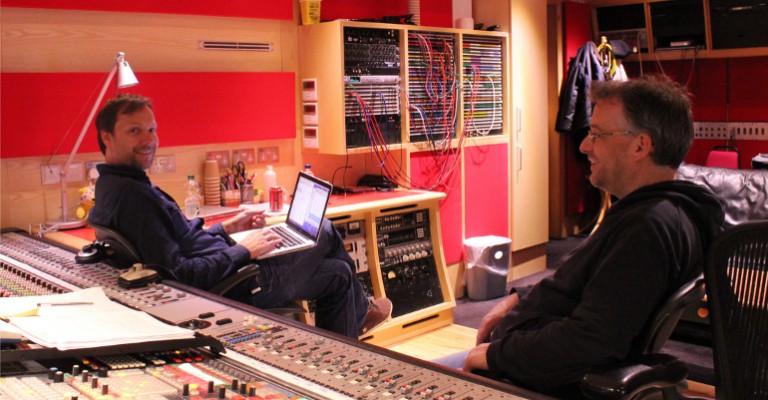
I love to do different types of projects, from big-budget films with lots of sound effects to Scandinavian dramas, or working with directors like Wim Wenders on 3D Dolby Atmos drama projects. I try to remember the best experience from these different films and use it on all different projects. It was great fun when I was hired to do sound design on the EA game Battlefield V. They wanted to have a more cinematic approach to the game, adding more emotions in the game using sound. I was supposed to only do the cinematics between gameplay but we ended up creating a new way to use sound in the gameplay. My experience working on several feature films came in handy. That was a great success.
And what about audience expectations? When a Nordic audience goes to see a Nordic film do they expect it to sound a certain way?
TR: Kind of. There is often less music in Nordic films, so there’s more ambience — the atmospheres and sounds give the emotion. Of course, we do some big films, some blockbusters, but there is some difference. Due to the nature of the films, I feel there’s more richness in the ambience and natural sounds and there are fewer big effects. They’re typically more character-driven; it’s more about the story than the sound.
There is often less music in Nordic films, so there’s more ambience — the atmospheres and sounds give the emotion.
For Pirates of the Caribbean and Maleficent: Mistress of Evil, the music was often a main focus to highlight the emotion and then we put in key sonic elements. That works for those types of films. But there are small details that you can tell with sound and those can get lost against a big music track. The producers, too, are worried that the film isn’t big enough.
That’s not to say there aren’t American films that are quiet and atmospheric. I feel there are several features now, like the film A Quiet Place. That film made great use of sound.
I would say too that Nordic films, like Nordic Noire, are darker. Again, it comes down to looking at films on an individual basis.
When you start thinking about sound earlier on a film, you get a better storytelling approach to sound.
When you start thinking about sound earlier on a film, you get a better storytelling approach to sound.
For instance, on Kon-Tiki, the raft was really a character itself, which required a whole series of sound design elements. The raft was made of wood logs tied together. When the journey begins, the raft is held tightly together but as they go on, the bindings get looser. That creates this whole mood and was essential to the storytelling. There are six people on this small raft and they were stuck on it for 100 days. Everything is slowly falling apart and the sound of the raft reinforces that.
When working with director Rønning, how is his approach to sound on a big Hollywood film different from his approach to sound on a Norwegian film?
TR: He’s really into sound and music. He loves it. The difference when we’re working on Norwegian films is that he likes to see a scene that’s nearly complete. So when we do Norwegian films, we talk about it, we talk with the composer, and then we put the sound and music together for a scene (or a couple of scenes) before presenting it to Joachim. So he’s watching it with an almost-complete soundtrack. That’s the biggest difference. That’s something we can’t do for a Hollywood film. When you listen to just one specific sound it’s easy to like it, but when you put that one sound in context with the rest of the soundtrack it makes a huge difference for the experience.
…when we do Norwegian films, we talk about it, we talk with the composer, and then we put the sound and music together for a scene (or a couple of scenes) before presenting it to Joachim.
On Maleficent: Mistress of Evil, we worked closely with the picture editors, who were both into sound. We did some temp mixes in the Avid and those were presented to him in scenes. He trusts us and trusts how we work, but also he’s dealing with a lot of VFX and that was tough in terms of sound, especially when VFX come in late during the final dub. Then you need to have had that talk with the director about how it’s going to look and how he wants it to sound.
When we work on big Hollywood films, we (sound designers) have a more specific role. We don’t do dialogue, or Foley, or things like that. But we don’t want to show just small designed pieces. So we put our sounds together for the reel and play it for the director. This way the director can see how it works in larger chunks.
Looking at Maleficent: Mistress of Evil, can you tell me about your collaboration with Supervising Sound Editor James Mather? You mentioned that you joined him in London to work on the film?
TR: James [Mather] is a great guy. He has lots of energy and a creative mind. So he’s fun to work with and it’s fun to be on the stage with him for the final mix.
We joined his team in Twickenham before the first temp. We moved to London and stayed there for two months up to the first temp. I did the first temp mix as the re-recording mixer on effects with Paul Massey, re-recording mixer on dialogue/music. We had worked together before, on Pirates of the Caribbean.
After the first temp, we went back to Norway to continue designing. The VFX were coming in at that time.
Baard and I love to record new sounds. We try to create a new palette of sounds for every project, so we make a list of elements that we want to record and then go out and have some fun.
We had lots of fun in Norway, recording lots of sounds. Baard and I love to record new sounds. We try to create a new palette of sounds for every project. We make a list of elements that we want to record and then go out and have some fun.
Baard was in charge of all the creatures and the backgrounds and I did all the magic sounds and big battle design. We worked closely with Jed Loughran (co-supervising sound editor), who has been working with James for a long time. Jed did some of the wing sounds, etc. We had a small team, which is how I like to work.
We went back to London and built two small design rooms so we could work closely with the editors and Joachim. He came in every second day and we showed him a reel or the designs.
Did you have a favorite sound or scene that you created for Maleficent: Mistress of Evil? What went into creating it?
TR: This film was a sequel and so I had a chat with Tim Nielsen about his approach on the first one. This is a different movie though; there was a big battle.
I often used a sound design tool called Sound Particles. We put in our recordings — bells, winds, different hot sizzle elements and pipe organs — and played with them.
I often used a sound design tool called Sound Particles. We put in our recordings — bells, winds, different hot sizzle elements and pipe organs — and played with them.
There is a scene when Maleficent wakes up in a nest/cave in these tunnels after she’s been shot. The scene plays without music and you hear the small details of wind through the tunnels and distant voices of fairies flying over. It was fun to create the moment of Maleficent waking up and hearing these sounds and not knowing where she is.
We did lots of recordings, capturing waterphones and feathers, and some wind through pipe organs. We also recorded a male choir whispering and had some winds we recorded for Kon-Tiki as well.
Can you tell me about the ‘wind through pipe organs’ recording trip?
TR: There’s a church in Oslo that was very accommodating. We sent air through the pipes without using the organ’s wind system; we tried different ways of blowing through the pipes, like using an air compressor. And for the smaller pipes, we were able to use our voices. You just try different things, everything, and that’s the fun part. Here in Norway, everybody thinks it’s fun to be a part of films and so they are very accommodating. We tried some things on the first trip that didn’t work and so we went back. But it was ok. They welcomed us back.
Here in Norway, everybody thinks it’s fun to be a part of films and so they are very accommodating.
For mics, we used contact mics on the outside and small lavalier mics snaked down into the pipes. I don’t like to make it too complicated. Sometimes you set up lots of mics and you don’t get what you want. I like to use a mono mic and, like a metal detector, try to find the right sound.
I love that Netflix has embraced international content and makes it available to viewers on a global scale. Great Norwegian shows like Occupied, Borderliner, and NOBEL I would never have experienced otherwise. What impact has Netflix and other streaming services had on the Norwegian film industry? What positive impacts have globalized content had on the sound community there?
TR: First, we’re getting a better budget because the films are being sold to more countries.
The coolest thing that’s happened is the collaboration between the Scandinavian countries.
The coolest thing that’s happened is the collaboration between the Scandinavian countries. Before it was the strangest thing; the Swedish people and Danish people didn’t watch Norwegian films. Maybe they thought our films weren’t as good? But now, we’re seeing more Scandinavian films; there’s more collaboration. Most of the TV series now are Norwegian-Swedish-Danish co-productions. So we get bigger budgets, more high-profile actors, and we get more exposure for our work. This is great as long as we get to continue making our types of films.
That could be one negative aspect — that Netflix could try to make our approach to films formulaic. Our success comes from how we do things differently. It’s a fresh take.
One good thing is that lots of Norwegian directors have been successful doing Hollywood films, like Joachim Rønning, and Morten Tyldum (Passengers, The Imitation Game), and André Øvredal (Scary Stories to Tell in the Dark). We kind of follow them. That was the cool thing after Kon-Tiki, Joachim got Pirates of the Caribbean: Dead Men Tell No Tales. They wanted us to come with them and the producer on the film asked that we come with them because he loved the sound on Kon-Tiki. So that was cool.
One good thing is that lots of Norwegian directors have been successful doing Hollywood films, like Joachim Rønning, and Morten Tyldum (‘Passengers’, ‘The Imitation Game’), and André Øvredal (‘Scary Stories to Tell in the Dark’). We kind of follow them.
In terms of the sound industry, what are you looking forward to in 2020? Are there changes you’d like to see happen in the sound world this year?
I’m looking forward to doing more international projects with my 4-step approach and to the increased collaboration in the film community… We want to put sound on the map and talk more about the importance of sound as a storytelling tool.
TR: I’m looking forward to doing more international projects with my 4-step approach and to the increased collaboration in the film community. Before in Norway, we were competitors but now we build each other up and support each other. We want to put sound on the map and talk more about the importance of sound as a storytelling tool. We want to get editors, directors, and producers (especially producers) to be aware of the advantage of sound and how important sound is in the process. That’s my wish for 2020. And peace on earth of course ;)
A big thanks to Tormod Ringnes for the insights into his creative process – and to Jennifer Walden for the interview!
 Tesla Model X 2015 electric full size crossover SUV sport utility vehicleKrampfstadt Studio65,00 $0,00 $100% OFF
Tesla Model X 2015 electric full size crossover SUV sport utility vehicleKrampfstadt Studio65,00 $0,00 $100% OFF

